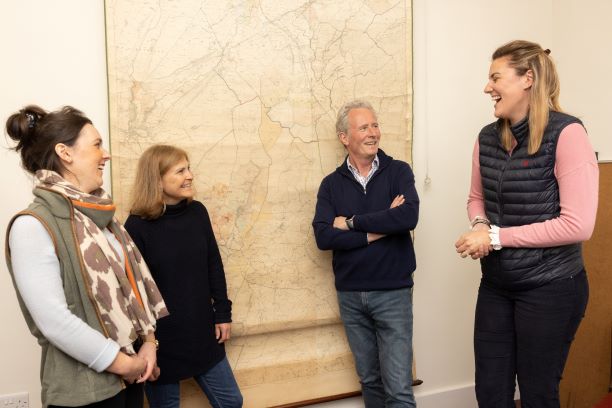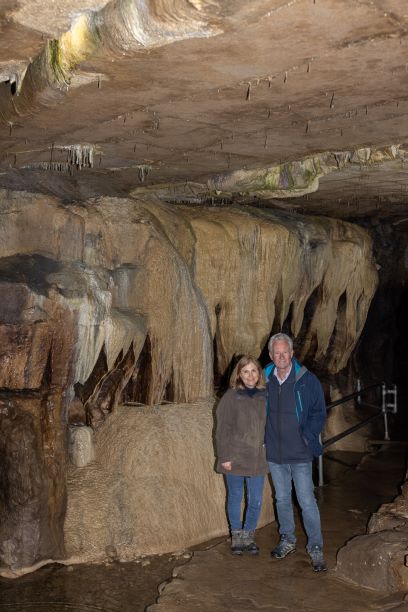The Ingleborough Estate planning for the future
The Rural Report heads north to find out how Knight Frank's Rural Consultancy team is helping two clients nurture the opportunities for their vision of People, Planet and Profit on a stunning upland estate.
7 minutes to read
The custodianship of an estate the size of Ingleborough is not a responsibility to be taken lightly, especially when many members of the local community live in houses owned by the estate, derive a living from the estate’s land or have an involvement in businesses or enterprises located within the estate’s boundaries.
It was not a responsibility that Philip and Maria Farrer, the current resident trustees, ever expected to fall on their shoulders. “We were happily settled in Somerset, having returned from New Zealand in 2009,” explains Philip. “In 2013, I was invited to become a trustee for the estate which was, at that time under the custodianship of Dr John Farrer.
Dr John, as he was affectionately known, had himself, been ‘summoned’ from Australia some 60 years before under similarly unexpected circumstances. Although the estate has been in the Farrer family since the early 1800s, Philip says he had little knowledge of it. “Dr John was my father’s third cousin. I laid my father’s ashes to rest here in 2004 and prior to that have only a vague memory of visiting the cave as a child.”

Sadly, shortly after Philip became a trustee, Dr John died, at the age of 92, and his long-standing dedication left something of a gap to be filled. For the next few years, the trustees ran the estate from afar, but it soon became clear that this was not really a model that worked and that a closer involvement was needed. “To cut a long story short,” says Philip, “I was the next cab on the block and Maria and I concluded that it was a responsibility we should embrace.”
It was a steep learning curve. “It still is,” adds Maria. “An estate like this never stands still. Old stone cottages, farms, woodland, SSSIs, quarrying, common land, sporting rights, caves and potholes – it’s a lot to take on board.”
Appropriately, I am talking to Philip and Maria in front of an antique map of Ingleborough which includes many of the Yorkshire Dales’ most famous landmarks like Gaping Gill cavern and the Ribblehead Viaduct. With them are Knight Frank’s Zoe Smith and Hannah Renwick who joined our rural consultancy team earlier this year.
Hannah looks after the Estate on a day-to-day basis, while Zoe provides longer-term strategic advice. What is striking is the ease with which the four converse and, often, laugh. This is clearly a relationship based on mutual respect and trust, but also friendship.
Relationship-building is crucial to Philip and Maria in maintaining the estate’s sense of community. In fact, their version of the Three Ps – People, Planet and Profit, is rather different. “A level of profitability is important in as much as it offers the estate a sustainable future,” says Maria. “But that is not the be all and end all. I’d describe our final P as a mix of potential, progress and preservation. That is how Profit will be realised in its widest sense.”
It is unsurprising, then, that it is the People element that resonates most with them. This helps to explain their approach to the management of the 40 let cottages in the village of Clapham, which lies at the heart of the estate. As tenancies come up for renewal, arguably the most logical thing to do (given the costs of modernising and the impracticalities of trying to meet energy efficiency standards) would be to consider selling. But to the Farrers, this would rip the soul out of the estate.
“Part of the uniqueness of the Ingleborough Estate is its relationship with the community,” Maria emphasises. “We are an integral part of the village and want to help ensure that it doesn’t become overrun by second homes and become a dormitory village like so many others. Our residents have a shared feeling of connection and engagement and that’s what a strong community is all about.”

Hannah fully understand the ethos of the trustees and works hard to find the right tenants for properties. “Where there is a three or four bedroom property, we try to benefit a family. It is about providing opportunities for people who are working locally, people sending their children to the local schools and people who want to get involved and help the village thrive.”
“The estate has long had an innovative approach to managing its property”, points out Maria as we chat later beside a lake created by one of Philip’s ancestors. Not only is it a stunning piece of landscape architecture, but was one of the pioneers in renewable energy. “In 1893, Clapham was one of the first villages to generate hydroelectric power. This provided a number of streetlights, powered the sawmill and later provided limited lighting for domestic use – allegedly one light bulb in every cottage!”
Over time, the sawmill became redundant, but retained its turbine and much of its original machinery. It is now the centre of an exciting place-making project that will benefit both locals and the many visitors who come to explore the estate’s most unusual asset – Ingleborough Cave. At the start of the picturesque nature trail leading to the caves, the sawmill is undergoing a sensitive transformation into a café and visitor centre, celebrating the history and heritage of the building and the wider area.
“We get a lot of school visits as this is a geological paradise,” says Philip. “But I think we can do more in terms of education It is great to see children, particularly those from inner cities, enjoying learning about the countryside and rural life. It’s a different perspective.
“All new projects involve an investment – both financial and in terms of energy and enthusiasm – but we need to look to the future. That is the biggest challenge; to create an estate that is fit for future purpose with new revenue streams sitting alongside more traditional ones. It is about creating a sustainable environment for those who live and work here as well as those who visit.”

To that end, Zoe has been working on a strategy to unlock more value from another of the estate’s assets, one that firmly ticks the Planet box. Large swathes of the UK’s uplands, exemplified by Ingleborough’s thousands of acres of moorland, are now seen as a vital weapon in the battle against climate change and the race towards net zero.
“Stewardship of the land and the importance of peatland and peatland restoration is one area becoming better understood in terms of sequestering carbon. For the Ingleborough Estate this provides potential in terms of carbon credits and grants. However, in practice it is not that simple,” explains Zoe who has been working hard with local organisations.
“The estate may own the land, but there are lots of other stakeholders who have the right to graze animals, agricultural tenants and also those with sporting rights. There is a balance to be struck and it is only through collaboration that an effective restoration plan can be developed; one that will help protect both historic moorland management techniques and the natural environment.”

“Balance is important,” agrees Philip as we admire the oddly congruent view of the Ribblehead Viaduct as it cuts across his family’s moorland. “Sometimes a blinkered approach to the environment can seem at odds with the interests of our stakeholders. We need to see things from many different points of view in order to arrive at some kind of sensible consensus.”
A large part of Zoe and Hannah’s role is to help strike this balance in a way that allows Philip and Maria to enjoy being the custodians of such a wonderful and unique estate. Not, of course, by abrogating their responsibilities; from the conversations during our time together it is clear that is not on the agenda. But perhaps by insulating them, to a degree, from some of the tensions that inevitably arise on such a diverse property with so many stakeholders.
At the end of my day spent with Philip, Maria, Zoe and Hannah I sense, as we walk across the moorland with dogs in tow, that what it all comes down to is teamwork. Owners and advisors aligned with one vision and responsibilities willingly shared.